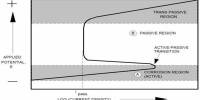Terahertz metamaterials are a type of composite metamaterial that interacts at terahertz (THz) frequencies. In materials research, the terahertz frequency range is typically defined as 0.1 to 10 THz. These are a type of artificially engineered material that interacts with terahertz (THz) electromagnetic waves that have frequencies ranging from 0.1 to 10 terahertz. Subwavelength-sized structures are arranged in periodic or non-periodic patterns to achieve desired properties not found in natural materials.
Metamaterials are distinguished by their ability to manipulate electromagnetic waves by utilizing their unique structural features rather than relying solely on the constituent materials’ properties. Terahertz metamaterials, on the other hand, are specifically designed to control and manipulate terahertz wave propagation, transmission, absorption, and polarization.
Because it is significantly underutilized, this bandwidth is also known as the terahertz gap. Terahertz waves are electromagnetic waves with higher frequencies than microwaves but lower frequencies than infrared radiation and visible light. Because of these properties, it is difficult to influence terahertz radiation using conventional electronic components and devices. Electronics technology, which controls electron flow, is well developed for microwaves and radio frequencies.
Similarly, the terahertz gap borders optical or photonic wavelengths; the infrared, visible, and ultraviolet ranges (or spectrums), all of which have well-developed lens technologies. The terahertz wavelength, or frequency range, appears to be useful for security screening, medical imaging, wireless communications systems, non-destructive evaluation, chemical identification, and submillimeter astronomy. Finally, because it is non-ionizing radiation, it does not pose the same risks as X-ray screening.
The subwavelength structures used in terahertz metamaterials are typically much smaller than the wavelength of the terahertz radiation, allowing for specific interactions with the wave. Researchers can tailor the electromagnetic response of the metamaterial to achieve desired functionalities by adjusting the shape, size, orientation, and arrangement of these structures.
Application
Terahertz metamaterials have a wide range of potential applications, including imaging, sensing, communication, and security. They can be used to create compact and high-resolution terahertz imaging systems, enabling non-invasive inspection of objects with high accuracy, due to their unique ability to manipulate terahertz waves. Terahertz metamaterials can also be used in terahertz communication systems to improve signal modulation and transmission.
Terahertz metamaterials have also been investigated for sensing applications such as chemical and biological sensing. Based on their terahertz spectral signatures, they can detect and identify specific substances. Furthermore, these metamaterials have the potential to be used in terahertz security systems, such as imaging systems for detecting hidden weapons or hazardous materials.
Terahertz metamaterials are still in the early stages of development, with ongoing research focusing on novel designs, fabrication techniques, and improved performance. Researchers hope to unlock new capabilities and applications in a variety of fields by utilizing the unique properties of terahertz waves and metamaterial engineering.
















